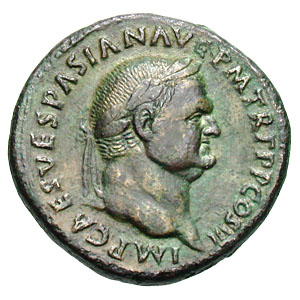I'm continually impressed with the literary
sophistication of the Book of Mormon--yet another testimony of it's veracity
for me. Much has been written about Book of Mormon examples of chiasmus, a rhetorical arrangement
of concepts that was particularly common in ancient Hebrew writings. Chiastic
form is common in the Old Testament, particularly when read in Hebrew. This
rhetorical tool was extensively used a an aide-memoire in times
when you couldn't easily jot down important things in a notebook (or smart
phone).
An instance of chiasmus which I've not seen pointed
out before sprang from the page as I read the words the Savior spoke to the
Nephites and Lamanites that survived the 'great and terrible' day of his death
(3 Nephi 10:4-6).
In this case, the chiastic structure is as follows:
a
b
c
c
b
a
b
a
c
b
a'
c'
a = fallen people
a’ = people spared by the Lord
b = house of Israel
c = hen gathering her chickens
c’ = hen gathering her chickens, if they repent and
return
Here is the exact text of 3 Nephi 10:4-6 in the chiastic structure.
a) O ye people of these great cities which have
fallen,
b) who are descendants of Jacob, yea, who are of
the house of Israel,
c) how oft have I gathered you as a hen gathereth
her chickens under her wings, and have nourished you.
c) And again, how oft would I have gathered you as
a hen gathereth her chickens under her wings, yea,
b) O ye people of the house of Israel,
a) who have fallen; yea,
b) O ye people of the house of Israel, ye that
dwell at Jerusalem,
a) as ye that have fallen; yea,
c) how oft would I have gathered you as a hen
gathereth her chickens, and ye would not.
b) O ye house of Israel
a’) whom I have spared,
c’) how oft will I gather you as a hen gathereth
her chickens under her wings, if ye will repent and return unto me with full
purpose of heart.
It is hard for me to read this and not 'glory in the Lord' even unto 'boasting in my God' and his restored gospel. Yet all these evidences seem to fall well short of persuading everyone.
I saw a recent blog and article about Brandon Flowers, lead singer of The Killers, as he shared his faith on a Norwegian talk show. His host's intent was initially veiled--until they blind-sided Brandon by bringing out Richard Dawkins, one of the most vocal atheists of popular culture. In his personal attack on Flowers (and Mormonism in general), Dawkins dismissed the Book of Mormon as "an obvious fake" because it was "a 19th century book written in 16th century English". Mr. Dawkins made a big deal about his conclusions after he "read" the Book of Mormon, but then quietly admitted that he had not read it all. He almost certainly didn't apply Moroni's formula to know of its truthfulness, since this falls outside of the paradigm of his science (it seems his blind devotion to his science is as strong as that which he criticizes in Brandon's faith). The nuances of ancient Hebrew literary tools being "faked" by an uneducated Vermont farm-boy will never persuade Mr. Dawkins that he may have failed to consider all the evidence. He has already decided.
I've seen the scientific method fail many times during my medical research years, primarily because the investigator draws their conclusion prior to considering all the evidence, or because they allow their bias to influence their interpretation of the results. The conclusion is written before the data have been fully vetted or analyzed; frequently the interpretation is out of context. It is critical to point out in these cases that it is not the scientific method that has failed but rather the investigator that has failed.
I saw a recent blog and article about Brandon Flowers, lead singer of The Killers, as he shared his faith on a Norwegian talk show. His host's intent was initially veiled--until they blind-sided Brandon by bringing out Richard Dawkins, one of the most vocal atheists of popular culture. In his personal attack on Flowers (and Mormonism in general), Dawkins dismissed the Book of Mormon as "an obvious fake" because it was "a 19th century book written in 16th century English". Mr. Dawkins made a big deal about his conclusions after he "read" the Book of Mormon, but then quietly admitted that he had not read it all. He almost certainly didn't apply Moroni's formula to know of its truthfulness, since this falls outside of the paradigm of his science (it seems his blind devotion to his science is as strong as that which he criticizes in Brandon's faith). The nuances of ancient Hebrew literary tools being "faked" by an uneducated Vermont farm-boy will never persuade Mr. Dawkins that he may have failed to consider all the evidence. He has already decided.
I've seen the scientific method fail many times during my medical research years, primarily because the investigator draws their conclusion prior to considering all the evidence, or because they allow their bias to influence their interpretation of the results. The conclusion is written before the data have been fully vetted or analyzed; frequently the interpretation is out of context. It is critical to point out in these cases that it is not the scientific method that has failed but rather the investigator that has failed.
This interview demonstrated a group of people that
just couldn't understand the testimony of Brandon Flowers--largely because of
their unbelief a priori. Mormon taught that in such cases, the quest for
understanding is over before it starts:
"Because of their unbelief,
they could not understand the word of God; and their hearts were
hardened." Mosiah 26:3





































